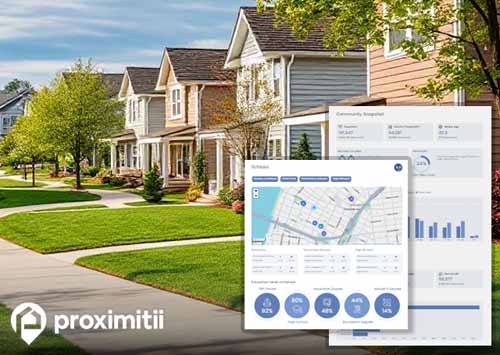| Statistic | Reportedincidents | /100k people | Lexington/100k people | Tennessee/100k people | National/100k people |
| Total crime | 268 | n/a (estimate) | 3,371 | 2,990 | 2,281 |
| Murder | 0 | n/a | 0.0 | 9.9 | 5.7 |
| Rape | 3 | n/a | 37.7 | 37.6 | 38.0 |
| Robbery | 4 | n/a | 50.3 | 71.5 | 66.5 |
| Assault | 60 | n/a | 754.7 | 509.3 | 264.1 |
| Violent crime | 67 | n/a (estimate) | 843 | 628 | 364 |
| Burglary | 31 | n/a | 389.9 | 296.7 | 250.7 |
| Theft | 162 | n/a | 2,037.7 | 1,613.7 | 1,347.2 |
| Vehicle theft | 8 | n/a | 100.6 | 451.4 | 318.7 |
| Property crime | 201 | n/a (estimate) | 2,528 | 2,362 | 1,917 |


Looking at the most recent crime report, the crime rate in Lexington is 12.7% higher than the national average. These crimes fall into two primary categories: violent and property. Violent crimes encompass murder, rape, robbery and assault, while property crimes involve theft, vehicle theft and burglary. In Lexington, there were 24 reported violent crimes, equivalent to 302 per 100,000 individuals, 18.3% lower than the national average. Additionally, there were 184 property crimes, amounting to 2316 per 100,000 residents, 18.5% higher than the U.S. average.
When assessing the total crime rate in Lexington per 100,000 people, it stands in the median range among all cities with reported crime data. Our analysis of total incidents, encompassing both violent and property crimes within Lexington, underscores the close alignment of reported crime rates with the national average as reported by other areas.
Although murder rates are essentially half of what they used to be 30+ years ago, some cities still struggle with higher rates than others. Lexington is one of those cities. In the last reported crime year, there were a total of 1 murders in Lexington, which equates to 13 murders per 100,000 people. This results in Lexington being a very dangerous place to live.
What do the local residents think about crime in Lexington? Well, based on a recent survey of 6 people (conducted by AreaVibes), 17% of Lexington residents said that there was virtually no crime and that they felt safe walking at night. Another 83% of respondents said that there was too much crime in the area and they did not feel safe walking alone at night.
To determine if Lexington is a safe place to live, let's take a look at the overall crime rate of the area, as well as the number of daily crimes. Lexington has a total crime rate that is 13% higher than the national average per 100,000 residents. This results in a total of 0.57 daily crimes (0.07 violent daily crimes and 0.5 daily property crimes) in Lexington.
Year-over-year crime data allows us to analyze short-term trends in crime activity. By comparing crime rates from one year to the next, we can identify patterns and shifts in Lexington crime rates. This information can be invaluable for residents looking to make informed decisions on where to live. When comparing the most recent year to the previous year, total crime in Lexington has decreased by 10.7% year over year. Violent crime has decreased by 53.9% and property crime has decreased by 1.7%.
Lexington has a population density of 669.5 people per square mile, while with the national average is 90.6 people per square mile. Cities characterized by high population density are frequently larger urban centers offering diverse economic prospects. Within these areas, income inequality may be accentuated, resulting in the coexistence of poverty and affluence. Such economic disparities can contribute to elevated property crimes and on occasion, violent crimes. Conversely, areas with low population density generally record lower Lexington crime rates.
The educational level within a community can have an influence on crime rates. Typically, higher levels of education are associated with reduced crime rates, as they offer individuals improved employment prospects and alternatives to engaging in criminal activities. Conversely, lower educational attainment tends to correspond with higher crime rates. In Lexington, 70.1% of residents have achieved at least a high school diploma, which differs from the national average of 83%.
High rental costs can limit economic mobility, making it difficult for individuals to save money, invest in education, or access better job opportunities. This can perpetuate a cycle of poverty and increase the risk of involvement in criminal activities. In summary, high rental costs can create economic challenges, overcrowding, and neighborhood dynamics that may increase the likelihood of certain types of crime, particularly property crimes. In Lexington, the average rental rates are $672 per month, compared to the national average of $949.

Why stop at city-to-city? With Local Insights, you can compare neighborhoods, zip codes, or even exact addresses. Access 300+ hyperlocal data points—from schools and crime to housing and amenities—to see which area is the better fit.

| Item | Lexington | Tennessee | National |
| Law enforcement employees (officers & civilians) | 32 | 11,551 | 558,732 |
| Police officers & civilians /1000 residents | 4.1 | 3.6 | 3.3 |
| State | Total offenders | Tennessee /100K | National /100K |
| Tennessee | 24,578 | 412 | 266 |
| City | Population | Violent crime/100k people | Property crime/100k people | Total crime/100k people |
| Henderson, TN | 6,323 | 278 | 927 | 1,205 |
| Scotts Hill, TN | 1,320 | 300 | 1,127 | 1,426 |
| Parker's Crossroads, TN | 585 | 708 | 2,663 | 3,371 |
| Chesterfield, TN | 706 | 713 | 2,681 | 3,394 |
| Sardis, TN | 366 | 768 | 2,888 | 3,655 |
| Clarksburg, TN | 918 | 823 | 3,096 | 3,919 |
| Lexington, TN | 7,838 | 843 | 2,528 | 3,371 |
| City | Population | Violent crime/100k people | Property crime/100k people | Total crime/100k people |
| Carnegie, PA | 7,839 | 64 | 958 | 1,022 |
| Olivette, MO | 7,837 | 72 | 1,199 | 1,271 |
| Etowah, NC | 7,840 | 215 | 1,137 | 1,353 |
| Ashland, WI | 7,841 | 191 | 3,321 | 3,512 |
| Brevard, NC | 7,841 | 268 | 1,669 | 1,937 |
| Lexington, TN | 7,838 | 843 | 2,528 | 3,371 |